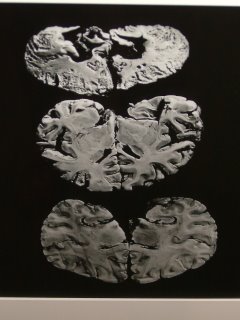They all call him Tomato-
jiisan (Old Tomato Man), the kids around here. He lives alone in a ramshackle house on the corner of the housing estate. Coming across him for the first time is a disturbing experience, even in daylight. Picture a sort of post-apocalyptic form, bent beyond recognition, looming out of the smoking rubble. His eyes do spectacular, other-worldly things; and his teeth defy description. He has tremendous amounts of hair, sprouting in clumps just above the ears, and his face is stubbled like a newly-harvested rice paddy. Burnt by the sun, and presumably life itself, he cuts a harrowing figure. He rides a sky-blue tricycle from time to time with the debris of a decade sitting in its basket.
I always say hello when our paths cross; he grins and murmurs neighbourly greetings in return. I didn't even know the local children called him Tomato-
jiisan, let alone the reason why. Yesterday I found out.
My son, along with the other leaders of the children's groups in the near vicinity, accompanied a teacher from school to visit Tomato-
jiisan. They knocked on his door, and waited for his wild visage to appear. They then bowed deeply and made their apologies, taking collective responsibility for the crimes committed against an old man by local kids. These crimes included calling him Tomato-
jiisan, and ringing his doorbell and scarpering (cherry-knocking we called it in my day, but its known as
pingu-pongu dashu in Japanese) over a period of five years. Tomato-
jiisan had grown tired of the taunts of kids, and had been worn down by answering his door to phantom visitors over half a decade. He had called the local school to complain and they had sprung into action.
You might think it was good that the school took an interest in the welfare of one of the older folk. After all, it can't be pleasant to live on your own, and have all and sundry mocking your very existence. Those sentiments entered my head too. Five years is a long time to yank anyone's chain, let alone an old man's. But why had the old fella been singled out for such treatment? And what I wanted to know more than anything, was why the local kids called him Tomato-
jiisan in the first place.
Well, it appears that unlike most of the gentle older folk around here, Tomato-
jiisan was not a fan of children from day one. And, on one fine evening five years ago, with the sun low in the sky, and the echoes of youthful laughter bouncing off the council housing walls, he lost his rag. Local folklore has it down as a completely unprovoked attack. A moment of pure madness. With wild banshee cries and flying spittle, and the help of a large stock of overripe tomatoes conveniently to hand, he took advantage of the high ground on which his house is situated. Defying his age, the old man pelted the children with unerring accuracy. The kids below didn't stand a chance. Like rabbits caught in headlights, mesmerized by the windmilling arms and spinning eyes, they stood rooted to the spot. They were, to a child, cut down in a hail of soft, red, tomato flesh.
Thus, five years ago, the old fruit flinger on the corner of the estate became known as Tomato-
jiisan, and a five-year period of slow, stealthy revenge began.
Tomato-
jiisan. Sinner or sinned against?
Part of me says - sinner, definitely sinner. The tomato terrorist got off pretty lightly with a daft moniker and a few
fruitless (pun intended) trips to his front door.
But part of me says - sinned against. An old bloke, all alone in life. Perhaps it's our community that has failed him. You've got to feel sorry for him.






